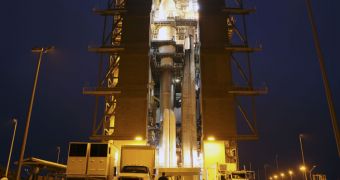Officials at the American space agency are trembling with anticipation as Saturday, November 26, draws nearer. The Mars Science Laboratory (MSL) mission is now poised to launch from the Cape Canaveral Air Force Station (CCAFS), in Florida.
The spacecraft is everything a planetary scientist could hope for in terms of capabilities. It features an advanced suite of scientific instruments, and is powered by nuclear energy. This could very well translate into a prolonged, extremely productive science life for the machine.
Originally, the MSL was supposed to launch two years ago, but a series of delays led to NASA missing the correct launch window. Earth and Mars only come within the correct alignment to launch space missions once every two years or so.
For 2011, the launch window opens on Friday, November 25, and closes on Thursday, December 15. If the space agency misses it, the organization will have to wait until late 2012-early 2013 to try again.
Originally, the mission was supposed to take off on Friday, but an issue with a battery aboard the Atlas V rocket that is carrying the MSL forced mission controllers to delay the takeoff. As of now, everything appears to be on track yet again, Space reports.
The centerpiece of the entire mission is the Curiosity rover, which will be deployed to the Martian surface via the innovative Sky Crane system. This is the first time such an approach is used. However, it is necessary to do so since this rover is about five times heavier than any of its predecessors.
Curiosity weighs nearly a ton, and is the size of a Mini Cooper, so it cannot possibly be deployed using airbags. NASA experts are eager to see how the Sky Crane system performs in landing the spacecraft, since everything needs to be timed perfectly.
“This is a Mars scientist's dream machine. This rover is not only the most technically capable rover ever sent to another planet, but it's actually the most capable scientific explorer we've ever sent out,” Ashwin Vasavada explained.
The expert, who holds an appointment as the MSL deputy project scientist at the NASA Jet Propulsion Laboratory (JPL) in Pasadena, California, made the statement to the media on November 10.
The main goal of the mission is to determine whether life was at any point possible on Mars. The rover will look for organic compounds in the ground, as well as potential signs of microorganisms and lifeforms. By the end of the mission, experts should have a fairly good understanding of the planet's environment.
Curiosity is scheduled to reach Mars by August 2012.

 14 DAY TRIAL //
14 DAY TRIAL //